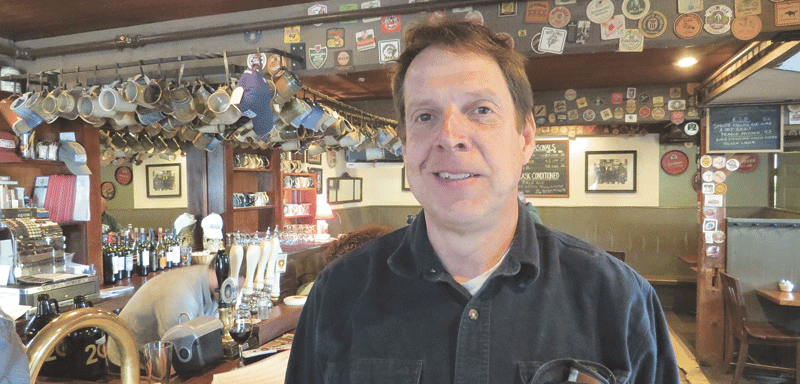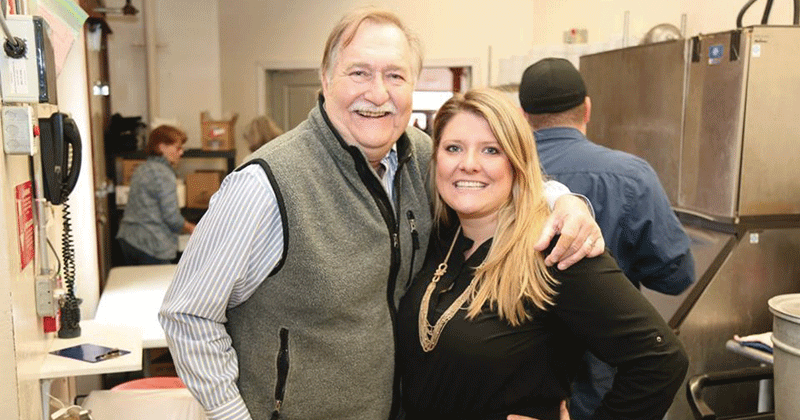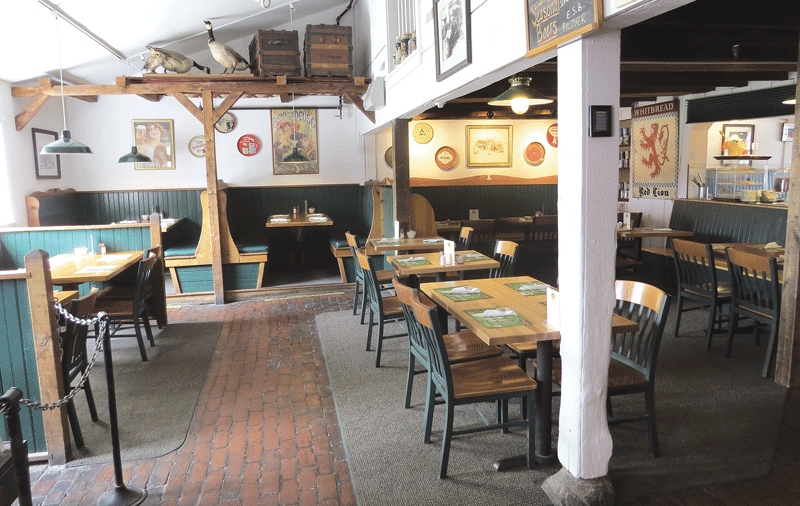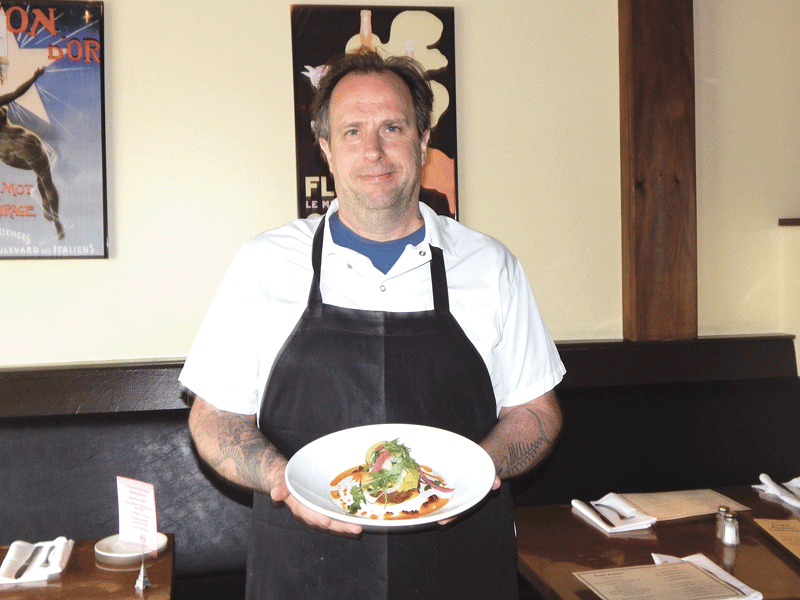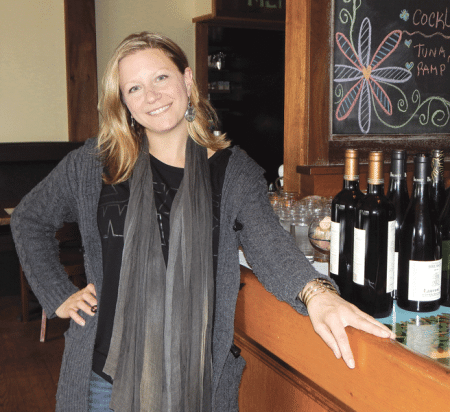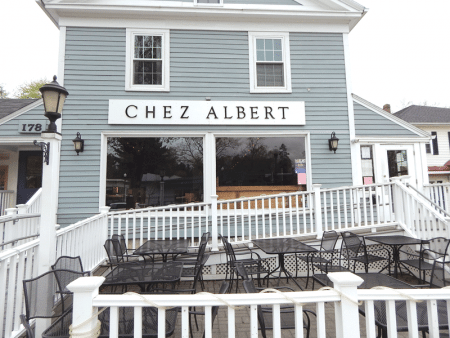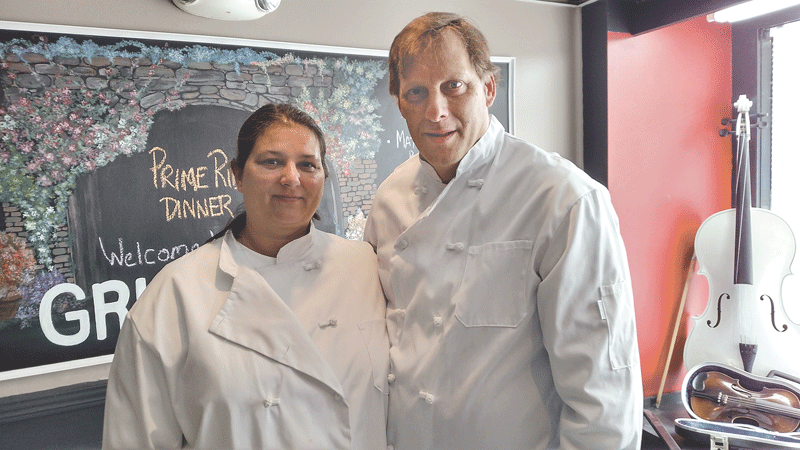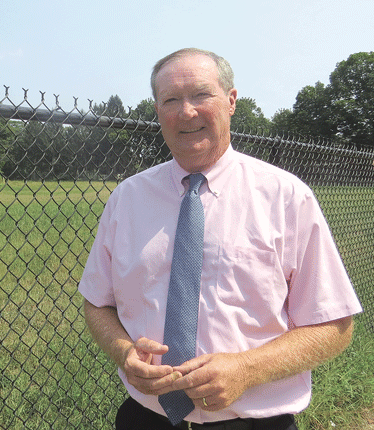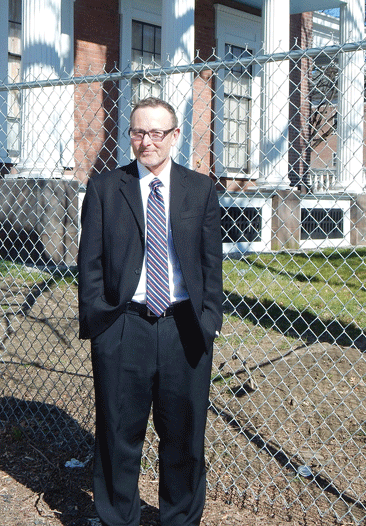Looking Forward, Not Back

Nate Costa says the first part of the T-Birds season was about paying tribute to the past; since Jan. 1, though, the team has been working even more diligently to forge its own identity.
Nate Costa was talking about how the eight months since the launch of Springfield’s new American Hockey League franchise, the Thunderbirds, has been both long and quick at the same time.
To get his point across, he pointed to his office in the team’s complex at the MassMutual Center and just how unlived in (or not ready for this writer’s camera) it is.
Indeed, while the credenza over his desk seems somewhat organized, complete with a good-sized bobblehead collection, a photo from his college commencement, and other mementos, the rest of it would certainly not fit that description. A dorm fridge sits on the floor unplugged, the energy-rating tag still attached to the door. Several photos, plaques, and other items, including a wooden clock commemorating the New York Giants’ victory in Super Bowl XXI (Costa’s a huge fan of that team), take up space on shelves or the floor, rather than the walls.
Meanwhile, there are several boxes of team replica jerseys stacked in one corner. They are destined, hopefully, for bars, restaurants, and clubs across the area in an effort to enlist their support — and wall space — in efforts to build momentum and a fan base (more on that later).
“This office … just hasn’t been a priority,” said Costa, the team’s executive vice president, uttering those words slowly for emphasis before going into great detail about what has been a priority. And this would be anything and everything that goes into building the Thunderbirds brand and making this AHL franchise part of the fabric of the community.
A long, quick eight months in, Costa believes he and his team have made significant progress on both scores, enough to imply strongly that he can already declare this inaugural season a success on many levels.
That list does not necessarily include the AHL’s Atlantic Division standings, where the T-Birds are firmly entrenched in sixth place, only a few points ahead of cellar-dwelling Hartford and nearly 30 points behind pace-setting Wilkes-Barre/Scranton.
But it would include average attendance (roughly 4,500, a marked increase over last year) and the demographic breakdown of those crowds (fans of all ages, but an encouraging number of young people), as well as a host of intangibles Costa noted, including ‘energy,’ ‘buzz,’ and ‘brand recognition.’ (A ‘swear jar’ placed at the T-Birds offices to store fines deposited by those who uttered the former franchise’s name, ‘Falcons,’ has been retired, because no one really does that anymore).
“The vision for this, right from the get-go, was creating a brand and creating an identity in Springfield that was centered not just on community involvement and hockey, but entertainment,” he explained. “That’s family-friendly entertainment that’s affordable and provides value. And I think we’ve accomplished much of that in terms of laying a foundation for something that’s consistent.”
Overall, Costa said his team, using its own imagination while also borrowing heavily from the success of other franchises, has succeeded in creating a game experience that is succeeding in drawing fans no matter what the team’s record happens to be. Perhaps the best example of this is Friday-night games, or the Friday 4-for-All, as the team calls them.
Live music featuring local bands precedes those tilts, which also feature free parking in the Civic Center Parking Garage (as all games do), $1 concessions (hot dogs, soda, and popcorn), and $4 Coors Light draughts.
The package has proven attractive enough to lure college students and families alike, said Costa, adding that the Friday-night games are becoming a fixture, if they haven’t crossed that threshold already.
“Friday nights … you can’t get a better value anywhere in town,” he said. “And it’s starting to spread in terms of awareness. Overall, there’s an atmosphere in the building that wasn’t there before.”
But there’s more, including so-called ‘winning weekdays’ — if the team wins one of those rare non-weekend games, attendees get a free ticket to the next one — as well as a host of on-ice game-day experiences created to attract young people and spur group-ticket sales, and an array of giveaways, special offers, and promotions.
And then, there’s Ric Flair, the former professional wrestler and consummate self-promoter, who will be the special attraction at the Feb. 10 (another Friday) tilt against Hartford.
“The Syracuse Crunch brought him in one night a few years ago, and it was a smash success — it was one of the biggest nights they’ve had in a long time,” said Costa, offering one of many examples of how the team is borrowing best practices. “We’re not sold out yet, but we’re on our way; he’s as topical as ever.”
For this issue, BusinessWest talked at length with Costa about the progress achieved to date with building a fan base for the T-Birds and the challenges that remain.
Changing Their Tune
Costa grew up in Springfield — he’s a Cathedral High School alum — and has many vivid memories of watching Springfield Falcons games with his father and grandfather at the old Springfield Civic Center.
Generations of people have such memories involving Springfield teams also named the Indians and Kings, he noted, adding that professional hockey in Springfield dates back to the Roaring ’20s. This legacy was certainly on Costa’s mind as he worked with a team of owners to launch the Thunderbirds franchise last spring, and in many ways, the first part of the season was dedicated to the tradition and those who kept it alive, he told BusinessWest.
“I wanted to pay tribute to the history, because I’m a product of that,” he explained. “It wasn’t necessarily the sport, it was the experience — it was getting to spend time with my dad or my grandfather, and it was time that really stuck with me. So the beginning part of our season was really spent celebrating that history.”
Right down to “Shake, Rattle and Roll,” the rally-the-crowd song that has been played before, during, and after AHL games in Springfield for decades, which also greeted the T-Birds as they took the ice or scored a goal.
But starting with the Jan. 4 tilt against the Bridgeport Sound Tigers (one of those weekday games the T-Birds won, thus sending attendees home really happy), there was a different sound being heard.
It was “Out of Our Heads” by the Dropkick Murphys, featuring the lyrics:
“Are we gonna make it
Or is this how we’ll go?
Are we gonna take it sitting down?
Hell no!
We’re going to cause a riot
We’re going to rip it up
We’re going to storm the gates
This place is going up.”
As he explained this choice and the retirement of “Shake, Rattle and Roll,” Costa said it was a well-thought-out decision that in many ways speaks to what his team (meaning the one in the backroom, not the one on the ice) is doing with this franchise across the board, or across the boards, as they say in this business.
“Our internal mindset was, once we get to Jan. 1, we’re going to flip that switch and embrace that new brand we’ve created in this market around the T-Birds,” he explained. “We switched to ‘Out of Our Heads’ because we were creating our own identity, and one that identifies with a young fan.
“We hear so much about people having memories with their parents and hearing ‘Shake, Rattle and Roll,’ he went on. “I want to create those same memories for a younger generation that may not identify with ‘Shake, Rattle and Roll,’ but does identify with something that’s more current. I’m trying to look forward, and not necessarily backward, and that’s what we’re trying to do continuously.”
That sentiment applies to basically every bullet-pointed item in the strategic plan, he continued, listing everything from marketing to the strategy for group sales to those on-ice promotions, to specific initiatives like Friday 4-for-Alls.
Starting with marketing, he said that, while the team still partakes in what would be considered traditional methods and platforms, its focus is on social media and the methods for reaching younger audiences.
“We’re doing a ton of marketing in a way that’s different from what we’ve seen in years past,” he told BusinessWest. “We’re putting a ton behind digital … being on Facebook and being intelligent about what we’re doing is exposing our product to a completely different fan; the majority of people who are on Facebook, who are on Instagram, who are on Twitter are young people.”

Nate Costa says the key to success for all the teams in the AHL, and especially the T-Birds, is to focus on providing entertainment, not just hockey.
The same philosophy being applied to marketing also prevails with other strategies for attracting and retaining fans, he went on, citing the Win on Weekdays promotion as just one example.
“We had two Wednesdays; we won the first one and had a really good redemption on the people coming back to the next one,” he explained. “We were able to grow our revenue, and it was a positive. Hopefully, what happens is we win a couple of those, you create a buzz, and you give people something to talk about. It’s a fun promotion.”
Changing On the Fly
As he talked about hockey, the AHL, the mindset of looking forward, not backward, and the involved process of turning league games into can’t-miss happenings, Costa focused most of his time and energy on what’s happening in Springfield.
But to put things into perspective — and also to show that everything he was talking about was certainly doable — he started by discussing what has happened in some other AHL cities, including Grand Rapids, Mich., San Antonio, Texas, where Costa cut his teeth in group sales, and especially Utica, N.Y.
That city of 65,000 people in Upstate New York’s Mohawk County, known perhaps more for the beer that’s been brewed there since 1888 than anything else, had an AHL franchise (the Devils, an affiliate of the NHL team with that same nickname) in the late ’80s and early ’90s, but lost it essentially due to lackluster support.
So when there was movement to locate the Vancouver Canucks’ affiliate there in 2013, the plan was greeted with a good deal of skepticism, said Costa, who was then working for the league in its Team Business Services Department.
“I was there when they bought the franchise,” he recalled. “And there were a lot of doubters, a lot of people who laughed a bit and said, ‘why would they put a team back in tiny Utica with its 3,800-seat arena?’”
But former AHL and NHL player Robert Esh had a different vision, he went on.
“He took a major-league attitude toward it,” Costa explained. “And he had a vision for what a franchise could do for a small city like that.”
To make a somewhat long story short, the Comets have sold out every game for the last two or three years, said Costa, and tickets have become a hot commodity.
“A Comets’ game is now the thing to do in Utica,” he said. “You can’t get a ticket, you can’t sniff a ticket now, and it’s because of the brand that he’s built. The game-night experience is unbelievable; it’s NHL-quality.”
In some ways, the T-Birds management team has borrowed from the Utica franchise when it comes to the game-night-experience side of the equation, said Costa, but also from the specific mindset of making one of the team’s games the thing to do — on Friday night, yes, but really any night they’re playing.
And the team has borrowed from other franchises as well, he said, especially with regard to the focus and drive put on group sales, which, as noted, is where Costa got his start in pro hockey with the San Antonio Rampage.
When Costa started there, the team was at or near the bottom of the league in attendance. It quickly rose in the ranks through group sales and season tickets.
“We started selling youth-hockey experiences and selling to schools — showing them experiences at the building that they couldn’t get by going to a Spurs game,” he explained. “We found our niche. You could spend $12 and sit in the same building where you would spend $200 to see the Spurs, and get a great experience.”
Net Results
In a nutshell, the assignment is the same in Springfield, said Costa, adding that, while there isn’t an NBA franchise also playing at the MassMutual Center, there are four pro sports teams just 90 minutes down the Turnpike, as well as a host of other attractions vying for the time and attention of families and young people.
Creating an experience for a fraction of the cost of one of those other options is one key to success for the T-Birds, he said, adding that the team is currently taking advantage of several opportunities it has created.
Actually, one was created by the MassMutual Center and its still fairly open schedule. Indeed, there are no other primary tenants competing for prime nights, as in most other AHL cities (San Antonio and Cleveland, where the NBA champion Cavaliers are the lead tenant, are prime examples), so the T-Birds have more Friday and Saturday dates to play with than other teams.
Another opportunity that came about is free parking, achieved through prolonged negotiations with the Springfield Parking Authority, And still another is the $1 price tag put on the hot dogs, soda, and popcorn, and $4 for a cup of Coors, said Costa, adding that they resulted from lengthy talks with Spectra Food Management, which handles concessions at the MassMutual Center, about price points that will yield dividends across the board.
“We’re jointly looking at this as a chance to provide, on one day a week, Friday, an opportunity to expose our product to more people and different fans,” he said of that specific deal, but also the combination of factors that have come together, adding that the strategy is obviously working.
“If you come here on a Friday night now, or a Sunday night when we have an extreme value like for our Sunday Fun Days, you see a ton of kids,” said Costa. “That’s not to say that there weren’t kids before — I came here, and there were absolutely kids. But there’s a different energy in the building, and it’s continued to grow.

“And it’s not just young kids,” he went on. “We’re seeing more 21- to 35-year-olds than ever before; we’re seeing a lot more college kids coming out on Friday nights, because there’s value, and we’ve put a premium on our game-night experience.”
So much so that Costa and his team are trying to somehow replicate Friday’s energy and atmosphere on Saturday.
But when it comes to exposing the product to new audiences, the real key is group sales, said Costa, adding that they not only help fill the parking garage and the arena, but they create experiences — from listening to local bands to being chosen to sing the National Anthem, to getting on the ice with the team — that will bring people back.
“That’s how we’re going to fill this building,” he said of group sales. “We have to get out and grab people and bring them in. With groups, a lot of them are young people, and when you expose them to the product and bring them in en masse, you make fans for life. Those are the ones who are going to go to mom and dad and say, ‘I had a great time; can we come again?’”
As for those jerseys in the boxes in Costa’s office, he ordered them with the hope, and expectation, that they would be framed and find their way onto the walls of area bars, restaurants, and clubs.
Those establishments would be sold a package (still to be formalized) whereby they would get the framed jersey and thus become part of the efforts to build visibility and buzz for the team.
“My real vision is to have this team become part of the fabric of the community,” he explained. “This bar program is part of that; we can develop a price point that’s easy for them to get to, and then they become partners with us, and we can become partners with them.
“If people go to these places, they see a piece of what we’re about, and they feel that connection to us,” he went on, adding that building these connections is essentially his job description.
A Winning Attitude
When asked when he might get around to hanging his Giants clock or even plugging in his refrigerator, Costa didn’t even bother answering.
His office hasn’t garnered more than a tiny bit of his time and attention over the past eight months, and that isn’t about to change.
Instead, he’s focused on that ongoing challenge of creating a large, stable, committed fanbase for the T-Birds, an assignment he’s embraced with vigor, imagination, and a mindset he’s seen work elsewhere and that he knows will work here.
That philosophy is to celebrate the past, but focus on today and tomorrow, and, as the Dropkick Murphys shout in “Out of Our Heads,” ‘storm the gates.’
In other words, Springfield’s hockey team has changed its tune — in all kinds of ways.
George O’Brien can be reached at [email protected]




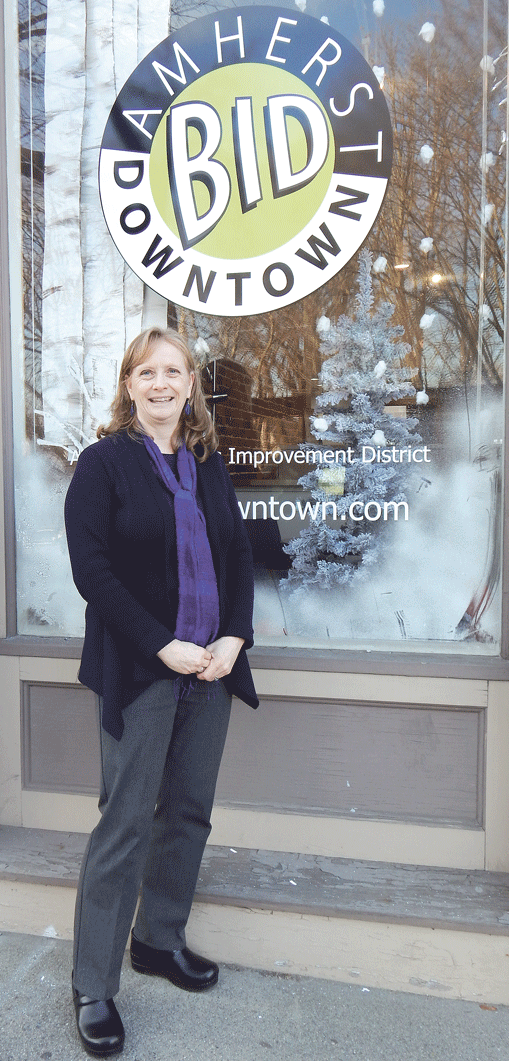
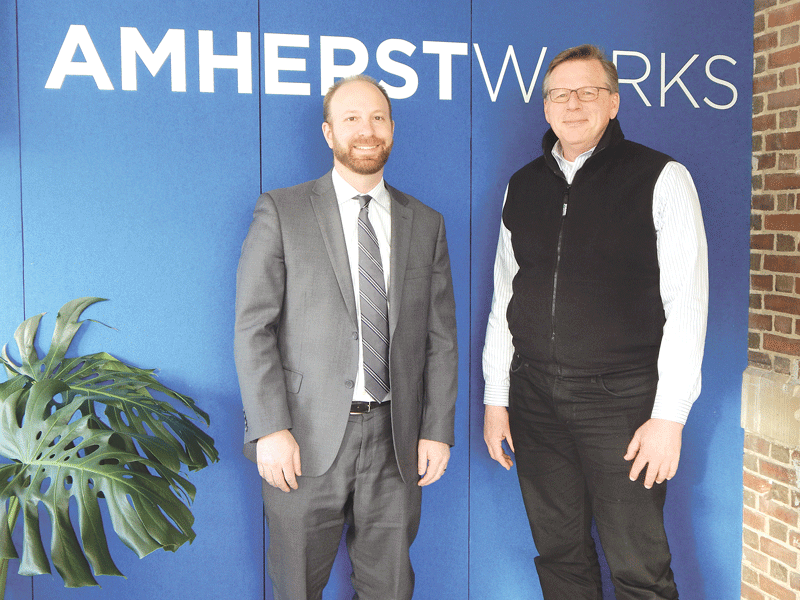

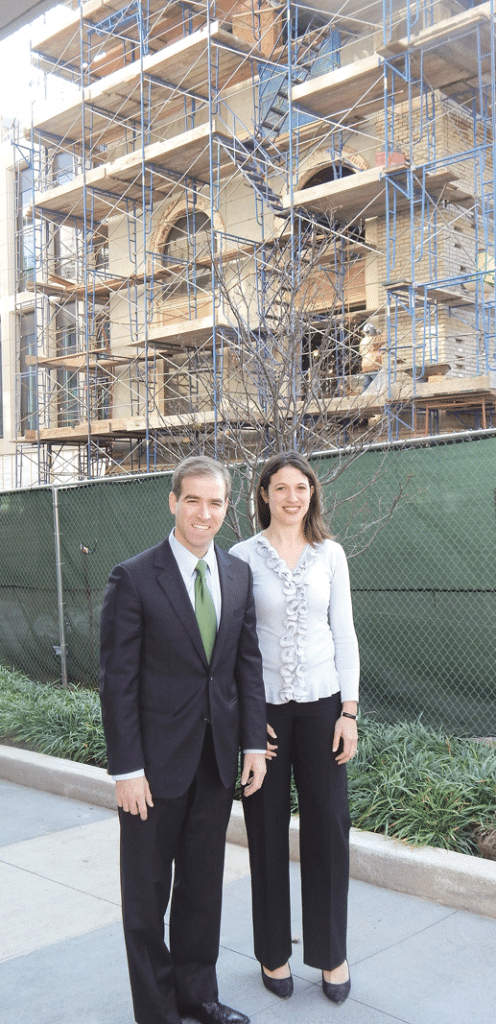


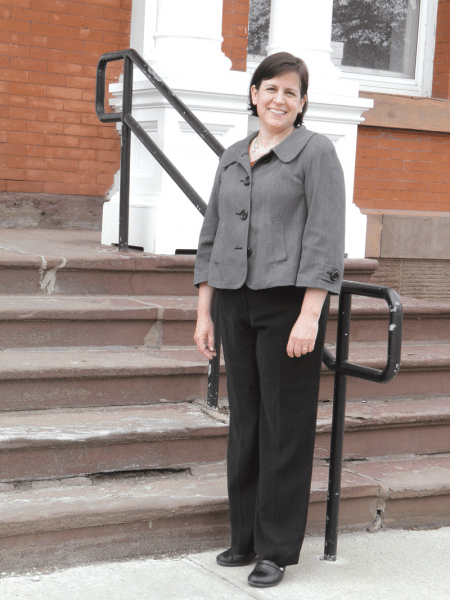
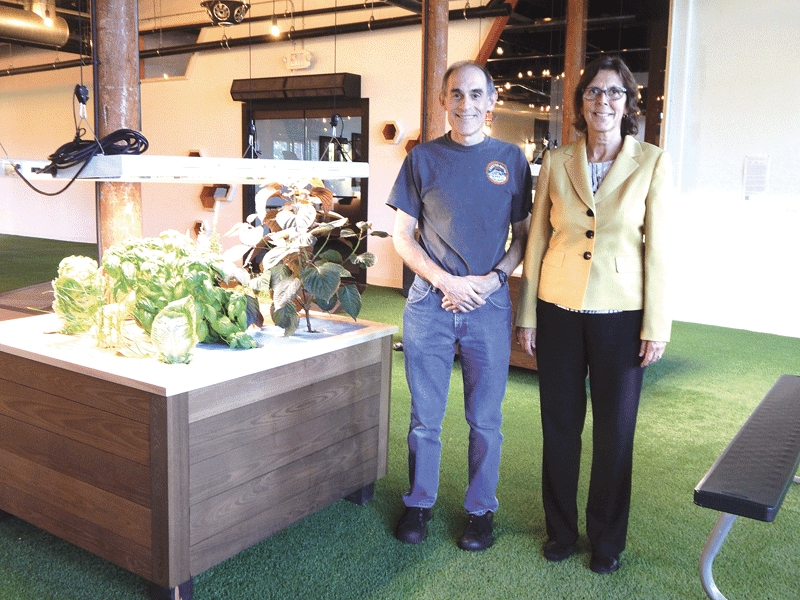
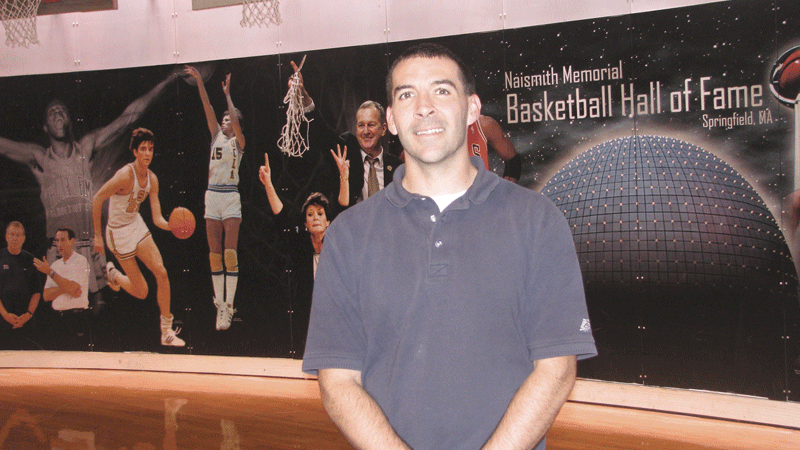



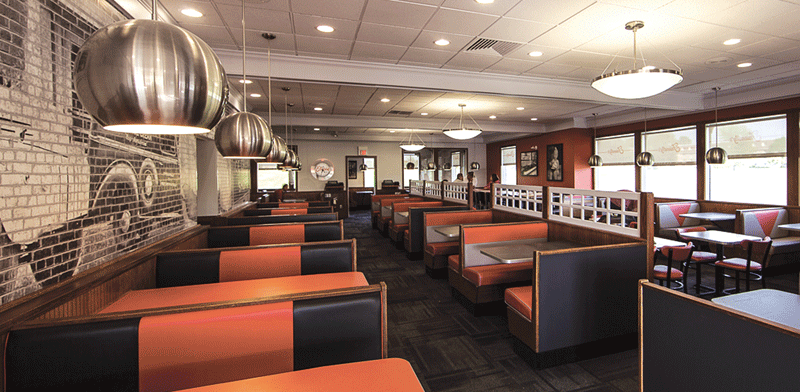




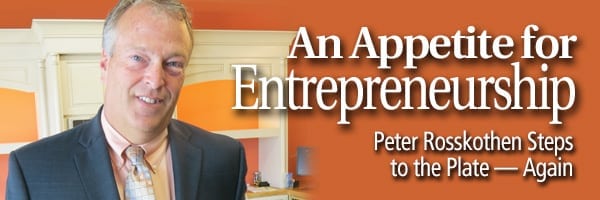

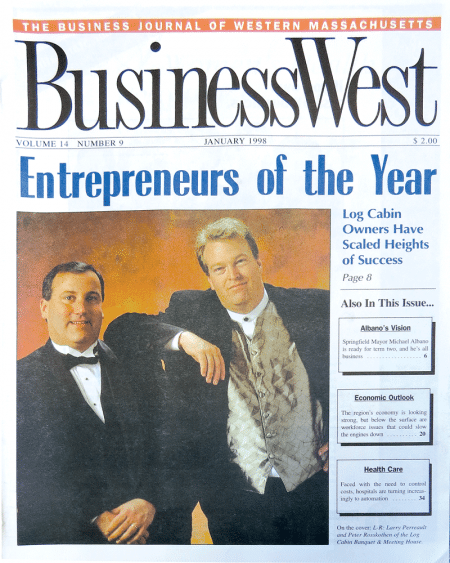
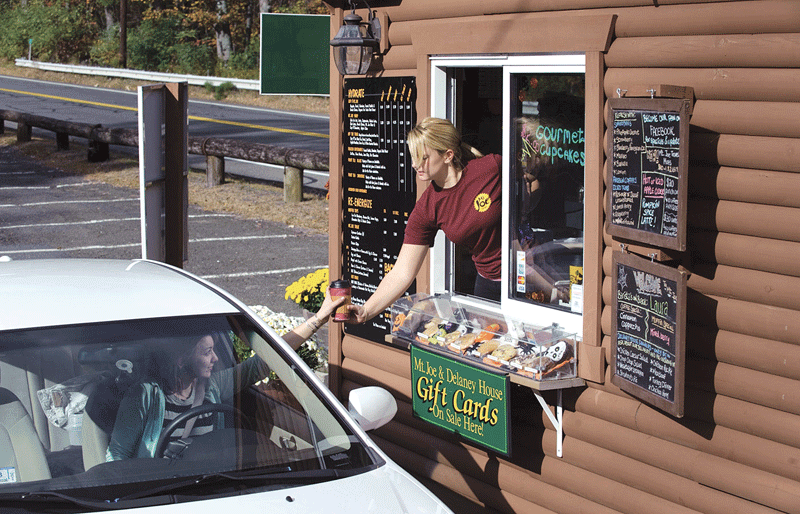


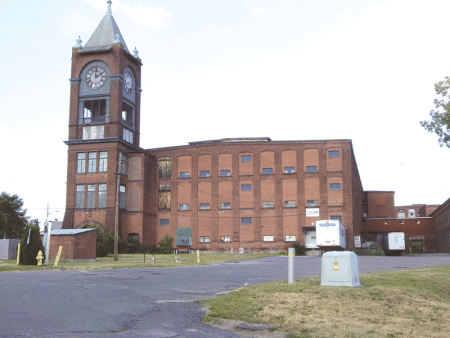
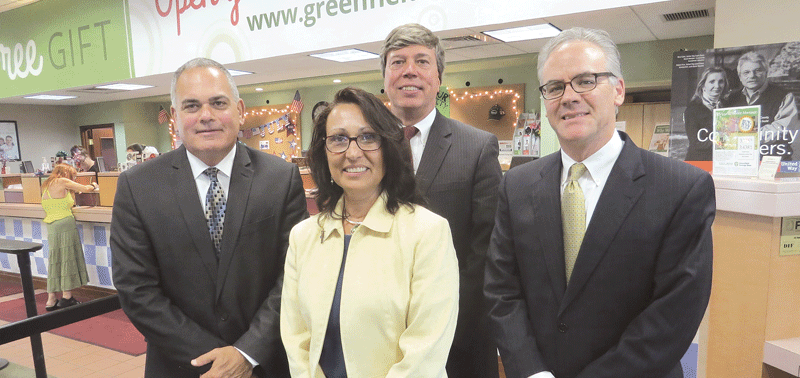

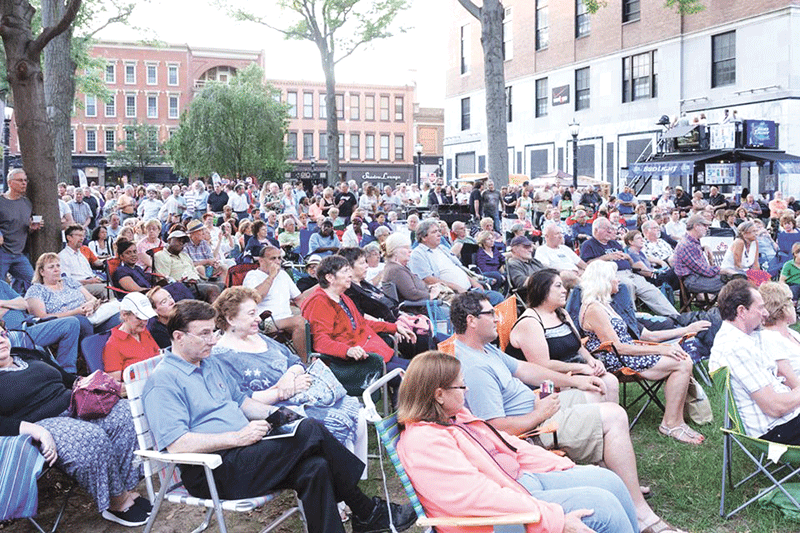
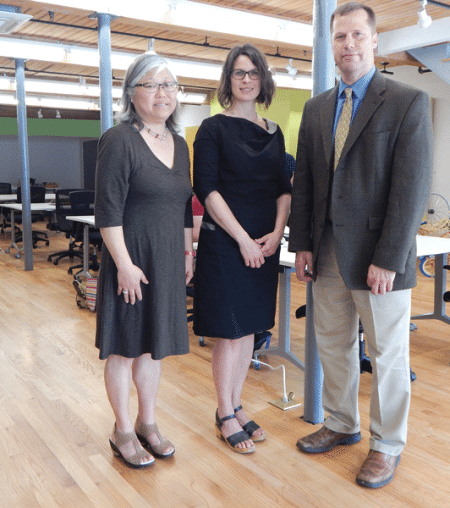

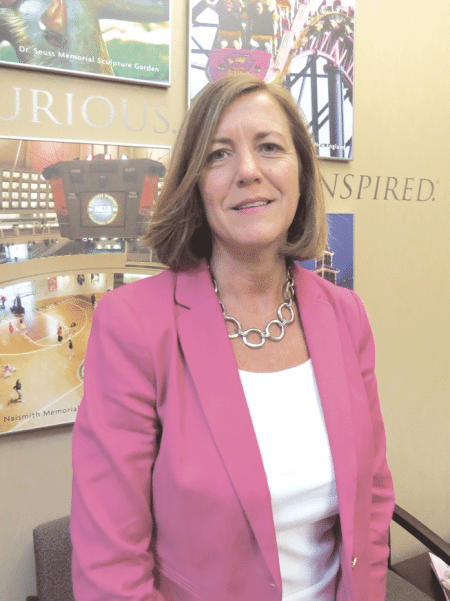

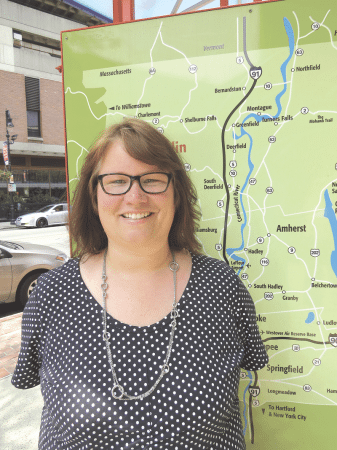

 By all accounts, restaurant are flourishing across Western Mass., a region that offers nearly endless choices when it comes to cuisine, atmosphere, price range … you name it. For this special section, the 2016 Restaurant Guide, we venture to three establishments — with calling cards ranging from solar-brewed beer to classic French cuisine to singing servers — that clearly reflect that variety. Bon appetit!
By all accounts, restaurant are flourishing across Western Mass., a region that offers nearly endless choices when it comes to cuisine, atmosphere, price range … you name it. For this special section, the 2016 Restaurant Guide, we venture to three establishments — with calling cards ranging from solar-brewed beer to classic French cuisine to singing servers — that clearly reflect that variety. Bon appetit!